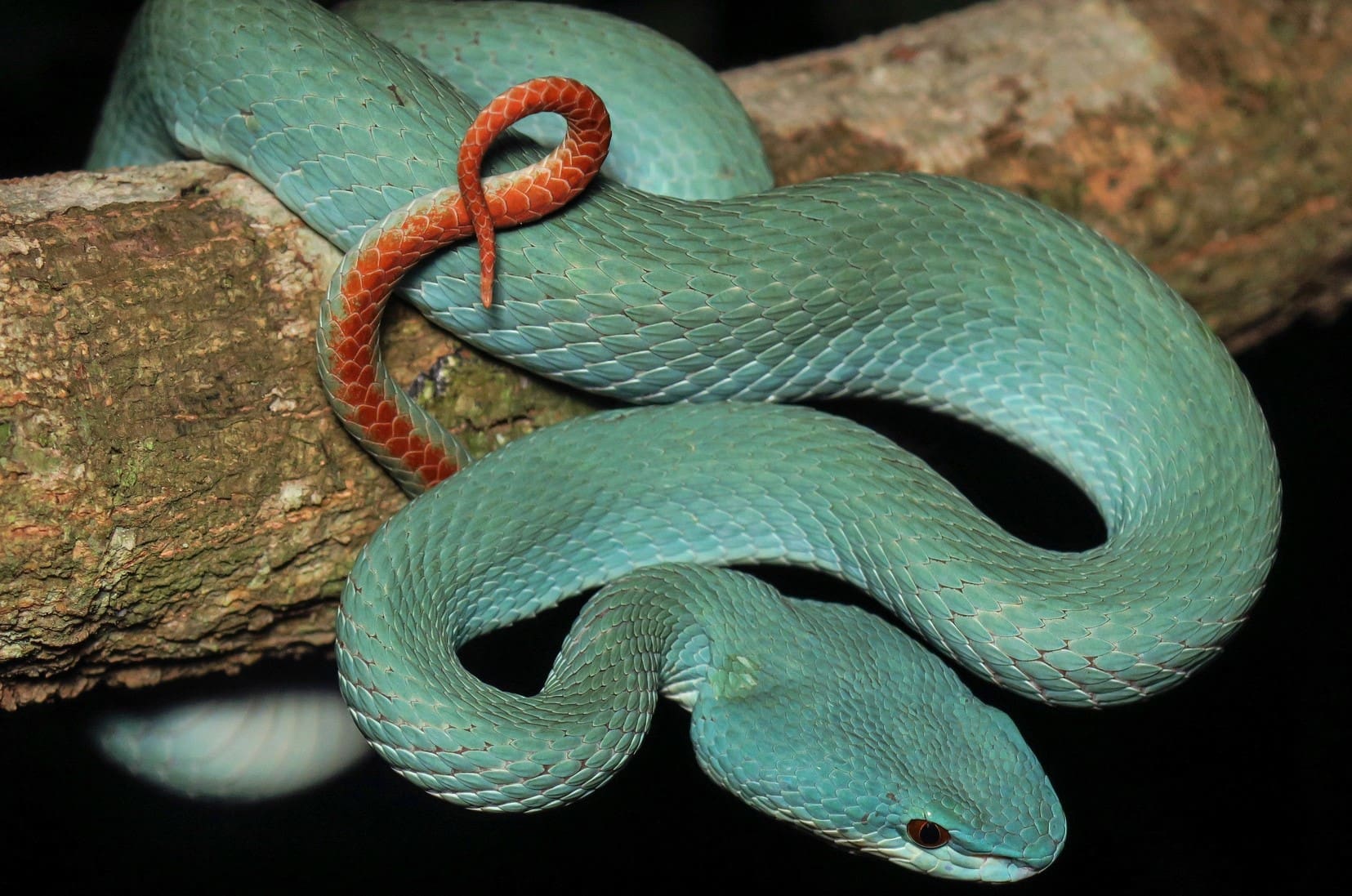
When it comes to fascinating creatures of the animal kingdom, the White-lipped Island Pit Viper is a true standout. This mesmerizing snake, also known as the Trimeresurus albolabris, is found in the lush islands of Southeast Asia, including Thailand, Malaysia, and Indonesia. With its striking appearance and unique behavior, the White-lipped Island Pit Viper never fails to captivate anyone lucky enough to encounter it.
In this article, we will delve into the mesmerizing world of the White-lipped Island Pit Viper and uncover 15 mind-blowing facts about this extraordinary species. From its venomous capabilities to its incredible color-changing ability, prepare to be astounded by the incredible adaptations and characteristics of this awe-inspiring snake. So, grab your sense of adventure and let’s embark on a journey to unravel the secrets of the White-lipped Island Pit Viper!
Key Takeaways:
- The White-lipped Island Pit Viper is a colorful, venomous snake found in Southeast Asia, playing a vital role in its ecosystem by controlling small animal populations and showing potential in medical research.
- Conservation efforts are crucial for the survival of the White-lipped Island Pit Viper, as habitat loss and overexploitation threaten its population. Its stunning coloration and unique hunting strategies make it a fascinating species to study and protect.
The White-lipped Island Pit Viper is a venomous snake.
The White-lipped Island Pit Viper, also known by its scientific name Trimeresurus insularis, is a highly venomous snake species found in the Indian Ocean region. Its venom is potent and can cause serious harm to its prey.
It is endemic to the islands of Southeast Asia.
This unique species is native to the islands of Southeast Asia, including countries like Indonesia, Malaysia, and Thailand. It is known to inhabit tropical rainforests and coastal areas.
The White-lipped Island Pit Viper possesses stunning coloration.
One of the most remarkable features of this snake is its vibrant coloration. It has a striking green body with distinct white stripes along its underbelly and lips, giving it its name.
It has a cryptic hunting strategy.
The White-lipped Island Pit Viper is an ambush predator, relying on its camouflage to remain hidden from prey. It patiently waits for small animals, such as birds and lizards, to pass by before striking with lightning speed.
This species has a unique defensive behavior.
When threatened, the White-lipped Island Pit Viper displays a fascinating defensive behavior called “triangulation.” It raises its head and triangularly positions its body, giving it an intimidating appearance.
It has heat-sensing abilities.
Similar to other pit vipers, this snake has specialized heat-sensing organs called “pit organs” located on each side of its head. These organs allow it to detect warm-blooded prey even in the dark.
The White-lipped Island Pit Viper is arboreal.
Being a skilled climber, this snake spends most of its time in tree canopies. Its prehensile tail assists in gripping branches and moving with agility.
It gives birth to live young.
The White-lipped Island Pit Viper is ovoviviparous, meaning it gives birth to live young instead of laying eggs. The female retains the eggs within her body until they hatch, after which she delivers the offspring.
This snake is an important part of the ecosystem.
As a predator, the White-lipped Island Pit Viper plays a crucial role in balancing the ecological system of its habitat. By controlling populations of small mammals and reptiles, it helps maintain the overall biodiversity.
Its venom has medical potential.
Although the venom of the White-lipped Island Pit Viper is highly toxic, it also contains components that have shown potential in medical research. Scientists are studying these compounds for their possible applications in treating various diseases.
The White-lipped Island Pit Viper has unique jaw characteristics.
This snake has a remarkable adaptation known as “opisthoglyphous dentition,” which means it has enlarged rear fangs located at the back of its upper jaw. These fangs aid in injecting venom into its prey.
It has a specialized venom delivery system.
The White-lipped Island Pit Viper utilizes a venom delivery system called “proteroglyphous dentition.” It has short, hollow fangs located at the front of its upper jaw, allowing for efficient venom injection.
Males engage in combat during mating season.
During the breeding season, male White-lipped Island Pit Vipers engage in combat to establish dominance and access females. They intertwine their bodies and push against each other in a display of strength.
The venom of this snake is primarily hemotoxic.
The venom of the White-lipped Island Pit Viper mainly contains hemotoxins, which target the blood and can cause severe tissue damage. Victims of its bite can experience pain, swelling, and potential necrosis.
Conservation efforts are crucial for its survival.
Due to habitat loss and overexploitation, the White-lipped Island Pit Viper is facing threats to its population. Conservation initiatives aimed at preserving its natural habitat and raising awareness are essential for ensuring its survival.
Conclusion
The White-lipped Island Pit Viper is truly a fascinating creature. With its striking appearance, unique venom, and interesting behaviors, it has captivated the minds of researchers and enthusiasts alike. From its ability to change color to its reproductive strategies, there is always something new to learn about this incredible snake.
As we delve deeper into understanding the White-lipped Island Pit Viper, we gain a deeper appreciation for the diversity and complexity of the animal kingdom. Its existence serves as a reminder of the wonders that nature has to offer and the importance of conserving these remarkable creatures.
So, next time you find yourself on a tropical island, keep an eye out for the White-lipped Island Pit Viper. You never know what mind-blowing facts you might discover about this incredible serpent.
FAQs
Q: Where can the White-lipped Island Pit Viper be found?
A: The White-lipped Island Pit Viper is native to the islands of Southeast Asia, including Borneo, Sumatra, and the Philippines.
Q: Is the White-lipped Island Pit Viper dangerous?
A: Yes, the White-lipped Island Pit Viper is venomous and should be approached with caution. Its venom can cause severe pain and swelling if bitten.
Q: What is the average size of a White-lipped Island Pit Viper?
A: The White-lipped Island Pit Viper is a relatively small snake, with adults typically measuring between 70 and 90 centimeters in length.
Q: How does the White-lipped Island Pit Viper change color?
A: The White-lipped Island Pit Viper has specialized cells called chromatophores that contain pigments. By expanding or contracting these cells, the snake can change its color to blend in with its surroundings or communicate with other snakes.
Q: What do White-lipped Island Pit Vipers eat?
A: White-lipped Island Pit Vipers primarily feed on small vertebrates such as birds and lizards. They are ambush predators, relying on their camouflage to surprise their prey.
Q: How do White-lipped Island Pit Vipers reproduce?
A: Female White-lipped Island Pit Vipers give birth to live young rather than laying eggs. They produce a small number of offspring and provide no care after birth.
Q: Are White-lipped Island Pit Vipers endangered?
A: The conservation status of the White-lipped Island Pit Viper is currently not evaluated. However, habitat loss and human activities pose potential threats to their population.
Was this page helpful?
Our commitment to delivering trustworthy and engaging content is at the heart of what we do. Each fact on our site is contributed by real users like you, bringing a wealth of diverse insights and information. To ensure the highest standards of accuracy and reliability, our dedicated editors meticulously review each submission. This process guarantees that the facts we share are not only fascinating but also credible. Trust in our commitment to quality and authenticity as you explore and learn with us.


